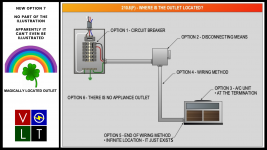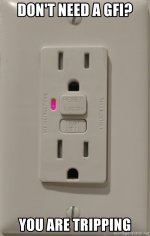Nothing you're saying here is swaying my opinion.
I think where you're going wrong is treating the outlet like it's a very precise location. I know Article 100 uses the word 'point' but that's not meant like the mathematical definition of point. For one thing, every circuit involves at least two wires so any outlet must involve at least two mathematical points. But I think it's meant like when you're driving down the highway and you see a sign that says 'Vista Point' and you turn off and end up in a parking lot. (And the one at the north end of the Golden Gate Bridge has how many parking spaces?) As long as you are in the parking lot you are still at the point. As long as you are in either the device that is wired to the premises wiring system, or the enclosure where that wiring occurs, inclusive, you are still at the outlet. So debating where within that area a GFCI function is wired is, in my opinion, unnecessary and irrelevant.
I think the only real substantive question left here that pertains to the OP is whether the Tesla Wall Connector's GFCI function meets the Class A requirements in Article 100. If it does, then no other GFCI should be needed. If it doesn't, then it's instructions contradict the NEC for many and possibly all installations so it can't be installed where the NEC applies.

While I'm no fan of Tesla, I think the latter conclusion would be an incredibly stupid result.
There's also the fact that the GFCI requirements in 210.8(F), 625.17, 625.22, 625.54 and possibly the UL standard are duplicative and confusing, and that 625 repeatedly steps outside the scope of the NEC.


